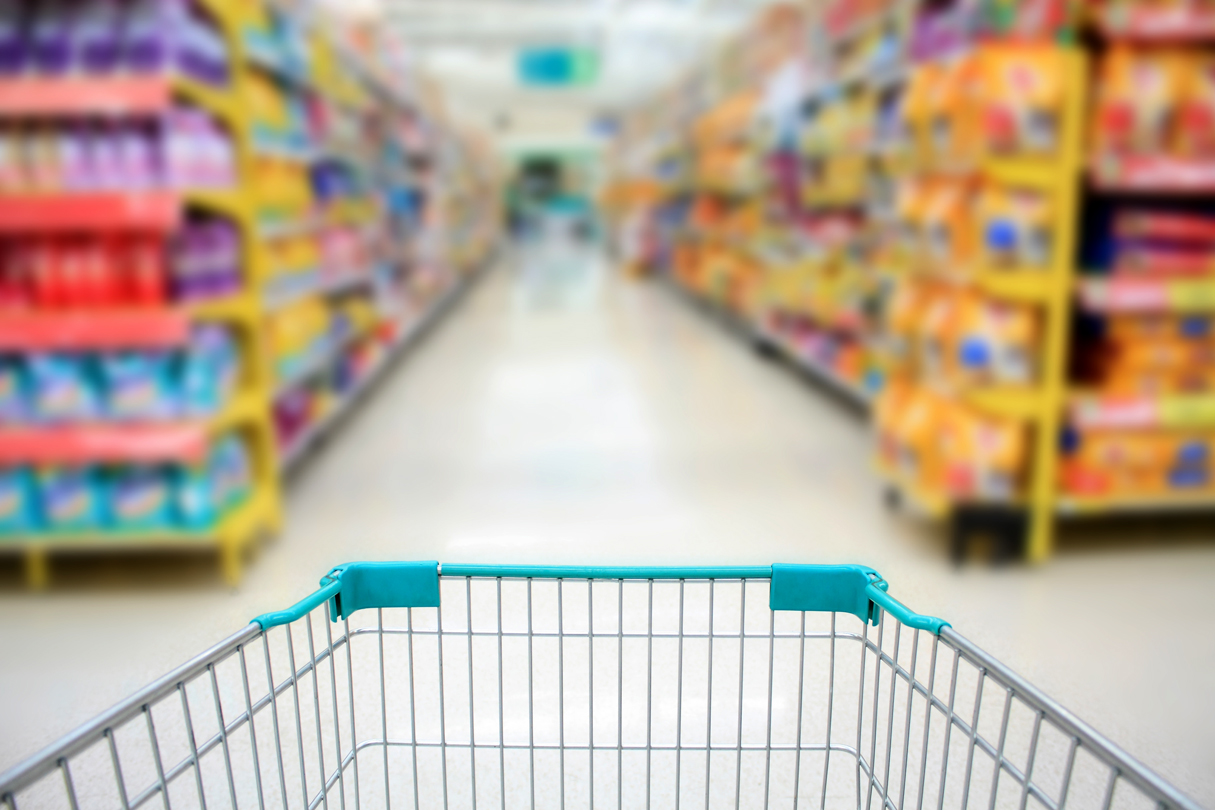The best bang for your buck at the grocery store tends to be in bulk packaging, which can make food shopping for one an excruciating process—especially while being mindful of nutrition. For a household of one, buying in bulk leads to a lot of waste, or a bland diet. Conversely, buying unpackaged items can get expensive quickly. We talked to nutrition consultant Rebecca Scritchfield for tips on efficient grocery shopping.
1. Prepare for the Grocery Store
“I always try to plan my grocery list, and make sure to not go grocery shopping when hungry. This helps me from buying food that I don’t need, or buying too much of something,” Scritchfield says.
Go through your refrigerator and cabinets to make a mental note of what you already have. Plan out meals and snacks for the week to help prioritize your grocery list, then write down what you need: two green peppers, one cantaloupe, five oranges, one can black beans, etc.
“I make sure to have fruits, vegetables, whole grains, and protein foods like I’m putting together a balanced plate,” Scritchfield says.
2. Be Mentally Tough
Not sticking to the list is a common pitfall, says Scritchfield. “Make more of an emotional ‘I gotta have this now‘ decision rather than, ‘This looks good, maybe next week,'” she said.
Cutting time from TV and other distractions to plan healthier meals always pays off, too, says Scritchfield.
“I know it’s not fun or sexy in the moment, but social media will always be there if you are healthy and happy, which means give time to yourself for self care,” she says, “and it does not have to take a lot of time.”
3. Don’t Buy in Bulk
“Variety is important so you don’t get bored with your food and to make sure you get the nutrients you need,” Scritchfield says. To avoid burying same-old produce in the back of your fridge, try buying in-season products. “Right now, kiwifruit is just coming into season. Since it’s not around all year, I take advantage of it when I see it in the store.”
Don’t buy in bulk unless it’s a staple that will last.
4. Stock Your “Go-To” Items
Buy a combination of fresh, frozen, and canned nutritious foods. To prepare a healthy meal for one, pair fresh produce with non-perishables.
“My pantry is stocked with canned tuna, salmon, beans, diced tomatoes, artichokes, corn, peaches, and pineapple. I usually keep frozen broccoli, mushrooms, and baby spinach around at all times. I buy fresh foods that are carefully planned,” Scritchfield says.
Think outside the box. Scritchfield uses macaroni and cheese as an example. “It’s easy and convenient, but not balanced. I throw in some canned tuna packed in olive oil and some broccoli or baby spinach, and now I have a meal that takes maybe 10 minutes to put together.”
For inspiration with canned foods, she suggests visiting Cans Get You Cooking, a group she works with.
5. “Repurpose” Your Food
Give a second life to your leftovers by repurposing them, says Scritchfield: “A main dish one day can be tomorrow’s side dish in a smaller portion, then add more veggies and protein and dinner is done.”
If you have fruit about to go bad, freeze it. Add it to smoothies, yogurt, oatmeal, or pancake and muffin recipes. Vegetables can be saved by cooking, followed by refrigeration or freezing. “Think soups, stir-frys, stews, and slow-cooker recipes,” she says.



















